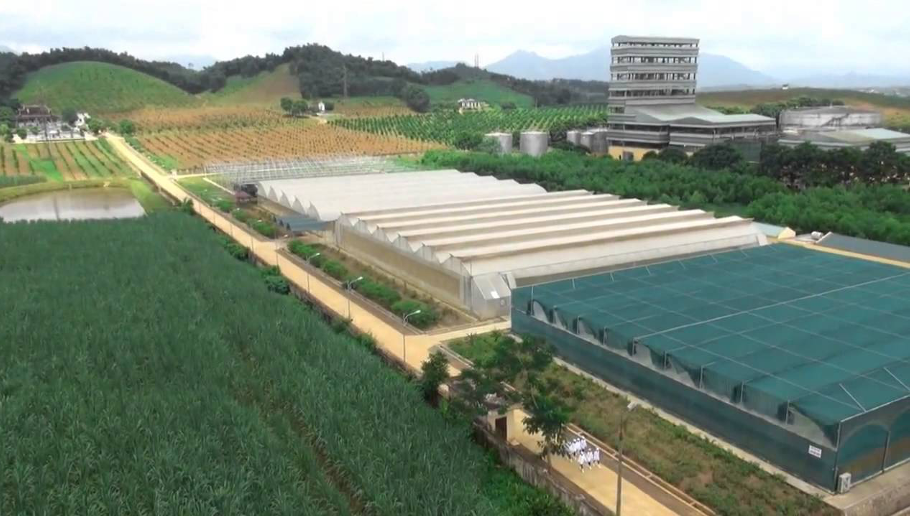Following rice, sugarcane, coconut, and other crops are now entering the race to transition and sell carbon credits in Vietnam.
Sugar industry prepares for carbon credits
Lam Son, the "sugarcane capital" in Thanh Hoa province, is undergoing a major turning point as Lam Son Sugar Joint Stock Company (Lasuco) signed a contract to implement the Carbon Emission Reduction Project for sugarcane raw materials with two Japanese partners, Idemitsu Kosan and Sagri, in December 2024.
According to the agreement, in 2025, the project will pilot low-emission cultivation on 500 hectares, applying advanced technologies such as satellite monitoring, soil and crop data analysis, and fertilizer optimization to reduce greenhouse gas emissions, especially nitrous oxide, while increasing soil carbon sequestration capacity. In 2026, the project plans to expand to 8,000 hectares and begin commercial operation.
Each hectare of sugarcane, if appropriately managed, can absorb and store 3-5 tons of CO₂ per year. With a scale of 8,000 hectares, the Lam Son sugarcane area could generate tens of thousands of carbon credits annually—a new asset that can be traded internationally.
 As expecte, in Q3/2025, Lam Son Sugar Joint Stock Company will receive its first carbon credits certified by the international organization Verra.
As expecte, in Q3/2025, Lam Son Sugar Joint Stock Company will receive its first carbon credits certified by the international organization Verra.To concretize these goals, Lasuco and its Japanese partners are deploying an MRV system (Measurement – Reporting – Verification) that is compliant with international standards. This system uses satellite images, field sensors, and artificial intelligence to measure carbon absorption and emissions on each plot accurately. Every hectare of sugarcane has a unique ID linked to production logs and environmental databases. All activities, from soil improvement, planting, and tending to harvesting, are digitized.
By the third quarter of 2025, the Lam Son sugarcane area is expected to receive its first carbon credits certified by Verra. This internationally recognized organization develops and manages standards for sustainable development, climate action, and environmental conservation. This is a stepping stone for Vietnam's sugar industry to enter the voluntary carbon credit market.
Experts also recognize the Gia Lai sugarcane region (approximately 32,000 hectares) as having carbon reserves of over 70 tons per hectare. This provides a strong foundation for selling carbon credits. Implementing comprehensive solutions to reduce greenhouse gas emissions from cultivation to sugar production and processing will increase farmers' profits.
The coconut sector could earn billions from carbon credits
Vietnam currently ranks 7th globally in coconut production, with about 188,000 hectares, mainly concentrated in Ben Tre, Tra Vinh, Tien Giang, and Vinh Long provinces.
An expert estimates that with the existing coconut plantation area and the carbon absorption potential of this crop, selling carbon credits at prices similar to forest carbon credits (around 5 USD per ton of CO₂) could generate thousands of billions of VND annually. For example, Ben Tre province, which has over 79,000 hectares of coconut gardens, could earn between 10 to 30 million USD from carbon credits at the current minimum price of 5 USD/ton CO₂. However, to obtain carbon credits from coconuts, cultivation practices must change, or new technologies must be invested in to reduce greenhouse gas emissions.
Tra Vinh province, which owns the second largest coconut area in the country after Ben Tre, is currently developing spatial distribution maps and estimating carbon stocks and CO₂ absorption potential in coconut biomass. This forms the basis for the province's plan to exploit carbon credits from coconuts shortly.
Great potential from rubber trees
Recent studies show that rubber trees have significant potential to mitigate climate change. Rubber trees themselves act as carbon sinks if sustainable management practices are promoted in rubber cultivation areas, alongside improved technical measures to reduce emissions during production and lessen negative climate impacts.
Mr. Vo Hoang An, Secretary General of the Vietnam Rubber Association, stated that with a total area of 910,000 hectares of rubber forests, Vietnam still has the potential to develop the carbon credit market.
Recognizing this potential, the Vietnam Rubber Group (VRG) has been researching and aiming to commercialize carbon credits shortly. Many companies have proactively aligned with international sustainability criteria and earned green certifications such as sustainable forest management under national and international standards (VFCS/PEFC-FM) and chain of custody certifications (PEFC-CoC) for traceability and production processes.
VRG is focusing on certifying 40-45% of rubber and planted forest areas in Vietnam with sustainable forest management standards (VFCS/PEFC-FM) and 75-80% of rubber latex processing plants with chain of custody certifications (PEFC-CoC). VRG is also researching and assessing carbon stock in rubber forests to target commercialization.
Other crops and plants for carbon credits
According to the Center for Environment and Community Resources Development handbook, concentrated planting of bamboo, rattan, and longan trees could be leveraged to sell carbon credits. Mr. Luong Ngoc Truong, Director of Vietnam FDI Investment Company, noted that long-term crops such as cashew, bời lời (bitter leaf), and rubber could establish carbon credits for market trading.